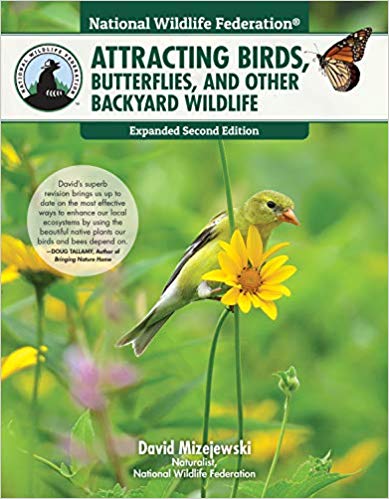
Attracting Birds, Butterflies, and Other Backyard Wildlife, Expanded Second Edition
By David Mizejewski, National Wildlife Federation
If you are new to backyard wildlife habitat gardening, this book is for you. This guide goes through all of the basics of backyard wildlife habitat. Since it is written to cover the United States, some of its recommendations for plants are a bit general. However, overall it provides a great introduction for new gardeners in easy to read sections with breathtaking pictures. The book also includes several fun projects to create feeders or habitat for backyard wildlife.
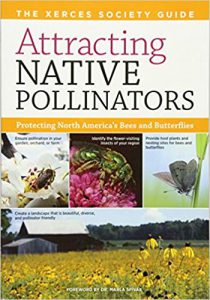
By The Xerces Society
The Xerces Society is my go-to resource for information on invertebrate conservation. This resource guide provides basic information about pollination and the animals that assist in the process. After the introductory material, it dives into ways that everyone can help pollinators from managing foraging habitat, providing nesting sites and providing overwintering sites. Much like David Mizejewski’s book, this guide is designed for the United States and often provides general advice. However, all of the material is well researched and referenced.
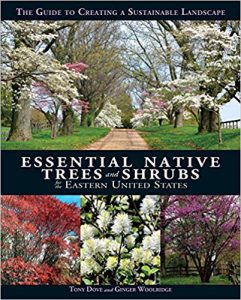
The Guide to Creating a Sustainable Landscape
By Tony Dove and Ginger Woolridge
If you would like a thorough resource on woody plants for backyard landscapes, check out this book! The guide begins with helpful ways to select plants for your needs. The meat of the book is comprised of plant profiles that includes information about form, seasons of interest, color, culture, growing notes and more. The diagrams and pictures included with each profile are particularly helpful for imagining these plants in your landscape. This guide is more focused on plants that do well in our region, but it does include some species that are native to the region, but not to Maryland.
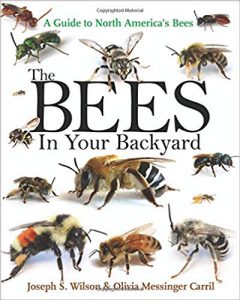
The Bees in Your Backyard
By Joseph Wilson and Olivia Messinger Carril
If you want to focus specifically on learning about native bees in your backyard, this guide is for you. This guide begins with detailed information about bees and their ecology. It has a small chapter on how to promote bees in backyards, while the rest of the guide focuses on major groups of bees and detailed information about them. The guide provides identification information, active period calendars, range maps and great pictures of bees found across North America.
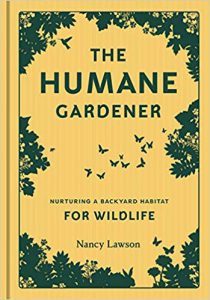
By Nancy Lawson
This book is written by a local author, Master Naturalist and garden enthusiast, Nancy Lawson. This book provides wonderful stories and anecdotes about wildlife in our backyards and also takes on different perspectives about animals that are sometimes seen as pests. Nancy provides tales from gardeners across the country as they describe their landscapes and the animals that are supported. Unlike the other books listed above, this book is much more story-focused.
Happy Spring HabiChat fans!
Spring has officially sprung in Maryland. The migratory birds, like warblers, are currently making their way through our forest. Early nesting bee species are emerging from their nests and are pollinating spring wildflowers. Young wildlife can be seen in the garden. I’m so excited for all of the spring phenomena at play!
In this edition of HabiChat, learn about our native spicebush and the beautiful lepidoptera it supports, as well as a little more information about our state bird, the Baltimore Oriole. This edition will also focus on ways to rethink spring by embracing some of our early flowering native plants. Finally, this HabiChat will introduce you to a couple of books that might be of interest for enhancing your backyard wildlife habitat.
Spring is such a busy time in our gardens. If you are interested in making your garden more pollinator friendly, check out the Spring 2015 HabiChat issue. In addition, keep in mind that young wildlife will begin to be a common sight in backyards. Last year’s Spring HabiChat focused on bird-safe windows and deer resistant plants for pollinators. Check out our page, Think Twice Before Rescuing Young Wildlife, to learn about best practices when it comes to young animals.
As a final note, the University of Maryland Extension is holding a General Forestry Course for Maryland landowners. The goal of the course is for the landowner to design a forest stewardship plan framework for their property. The course covers all aspects of forests and forest management. Registration opens June 1 and the course runs from Sept. 1 to Dec. 15. The cost is $150. For more information, please visit the University of Maryland Extension site.
Happy Habitats,
Kerry Wixted
Click here to have HabiChat—the quarterly backyard wildlife habitat newsletter from the Wild Acres program—delivered right to your inbox!
In this Issue
[URL='https://news.maryland.gov/dnr/2019/04/23/native-animal-profile-baltimore-oriole/']Native Animal Profile: Baltimore Oriole
Native Plant Profile: Spicebush
Habitat Tips: Rethinking Spring with Native Plants
Habitat Tips: Books for Backyard Wildlife Gardeners [/URL]
In this Issue
[URL='https://news.maryland.gov/dnr/2019/04/23/native-animal-profile-baltimore-oriole/']Native Animal Profile: Baltimore Oriole
Native Plant Profile: Spicebush
Habitat Tips: Rethinking Spring with Native Plants
Habitat Tips: Books for Backyard Wildlife Gardeners [/URL]

[ This article originally appeared here ]
